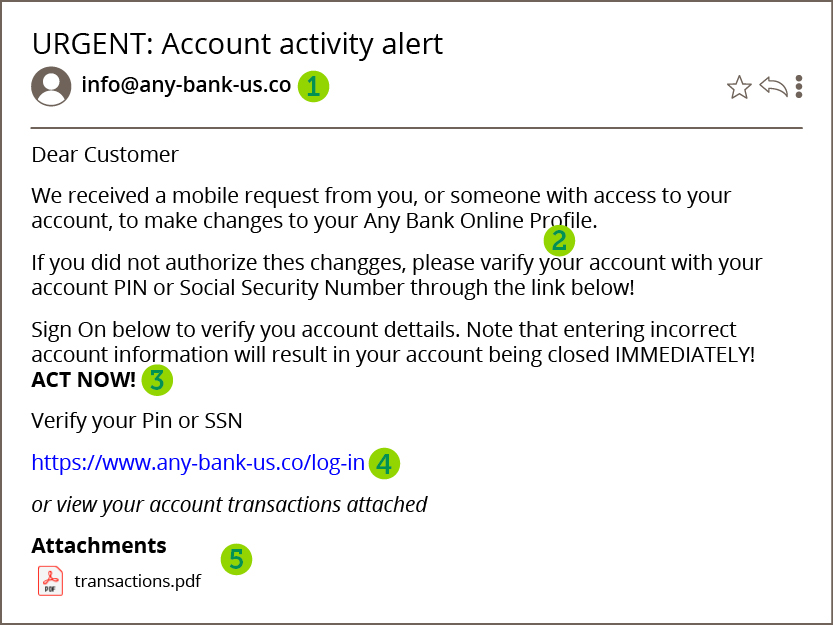Email scams account for 96 percent of all phishing attacks, making email the most popular tool for the bad guys. Often, the scammer will disguise the email to look and sound like it’s from Northwest Bank. As long as you don’t act on a message by clicking links or attachments, you’ll keep your information safe.
All you need to do is spot the signs of a scam before you click or reply.

 Unusual Email Address
Unusual Email Address
Slow it down. Does that look like an email address Northwest Bank would use? Be wary of unexpected emails from addresses that aren’t like the ones we typically employ.
 Misspelled Words
Misspelled Words
Spot check! If you see misspelled words or odd grammar, they can be clear signs of an impersonator.
 Scare Tactics
Scare Tactics
Don’t panic. If an email uses scare tactics, such as urgent warnings of account closure or security breaches, you can safely assume it’s a scam.
 Suspicious URLs
Suspicious URLs
Hold up—we will never ask you to log in via an email link. Phishing emails use deceptive URLs to take you to malicious websites. Never click links that you weren’t expecting.
 Unexpected Attachments
Unexpected Attachments
Northwest Bank will never send an email attachment unless you have requested it. Attachments can contain malware that can compromise your computer or personal information. Never click on attachments in unsolicited emails supposedly from Northwest Bank.
What to do if you fall for a phishing email message
-
Change your password if you clicked on a link and entered any sort of username and password into a fake site.
-
Contact your local Northwest Bank office immediately to report the suspicious message and the actions you took.
- If you lost money, file a police report.
-
Report the scam to the Federal Trade Commission or call 1-877-FTC-HELP (382-4357).
Want to learn more? Visit BanksNeverAskThat.com.


